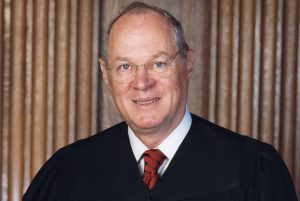Doctors can’t write a prescription to treat Founder’s Syndrome, nor are they likely to diagnose it. It’s not visible, like a rash, or something audible like a cough. But nonprofits that have been around for even a relatively short time should be on the lookout for it.
Founder’s Syndrome usually occurs when a founder is unwilling to step aside to make a clean break from the organization and the belief that only that person knows what’s best for the nonprofit, according to Linda Crompton, president and CEO of BoardSource, a Washington, D.C.-based nonprofit that publishes guidelines and policies about nonprofit governance and management. It usually occurs after the initial growth of a nonprofit, creating conflict between those who want the organization to adapt and a founder who wants to keep things status quo.
Ruth J. Abram founded the Lower East Side Tenement Museum in New York City in 1988 and is undecided about whether she will remain on its board. “It’s kind of her decision and about her time commitment,” said Peter Campanella, a museum board member who co-chaired the search committee to replace Abram with Arnold Kanarick.
Abram, who was recently succeeded as president by Morris J. Vogel, could stay on the board in an honorary capacity if she chooses, Campanella said. “How active she wants to be will be up to her, but she doesn’t want to be involved in day-to-day operations.” She still can play a vital role from the standpoint of public relations, communications, and development. “We don’t want to lose that, but we also want to respect her wishes too,” he said.
There was a lot of sensitivity among candidates about replacing a founder and board members understood the challenges involved, Campanella said. Some candidates were not interested because they didn’t want to replace a founder, particularly one who was highly regarded in the industry and in the area. “She started with nothing with this museum and made it happen,” he said.
The sitting president serves on the museum’s board, which is made up of about two dozen members serving three-year terms. The museum has an annual budget of more than $6 million with 40 full-time employees and about 40 part-time employees.
Abram led the organization through a $6-million acquisition of a new building on Orchard Street and the development of a five-year strategic plan. Campanella said the board was looking for someone to “take it to its next level.”
The board and search committee also were sensitive to selecting a future president who they believe has “the credibility and style to be able to follow in her footsteps and keep the organization and the museum together and moving forward,” Campanella said. “It is a little different replacing a founder versus someone who’s been there a couple years.”
Although finding a successor was ultimately the board’s responsibility, Abram was an ex-officio of the search committee’s meetings but didn’t have a vote. Abram was a strong influence, Campanella said, after all, “who else knows the museum best?”
BoardSource’s Crompton said it’s not a bad thing to have some founders involved in selecting their successor, and practically, it’s difficult to not have them involved. “It’s best if the founder has one voice and the board takes a stronger role in selecting a successor. While it’s not unreasonable that the founder have a voice in the selection process, it should not be the only voice,” she said.
Having a founder leave completely can minimize tensions but organizations potentially lose the institutional heritage and strengths that a founder can sometimes bring, such as inspiring passion among stakeholders, fundraising or external relations, said William Foster, a partner in the Boston office of The Bridgespan Group, a nonprofit that helps nonprofits with management strategies.
Committed, passionate and heavily involved founders and executive directors are part of the nonprofit world, and even necessary for nonprofits simply to be founded. Many nonprofits are founded and grow along with the career of one person, Foster said, so they reach this point and it’s the first time they’ve ever faced it. Where the challenge arises is when nonprofits try to make the transition from being a personal endeavor to an institutional endeavor.
Going through the stages Crompton said it’s critical to understand the problem: “The difficulty that we’re referring to in founder’s syndrome is the realization that the organization is going through stages,” she said, just as a product has a life cycle, it’s the individual who’s aging.
All organizations go through stages and often what an organization needs in the first stage of life is different from other stages. “Founders bring a tremendous amount of passion, and that’s needed. You need those ideas and passion to get the organization off the ground,” Crompton said.
“The same qualities that can lead to trouble in later stages are necessary to get things started,” Foster said. Where the challenge arises is when nonprofits try to make the transition “from being a personal endeavor to an institutional endeavor.”
After a nonprofit evolves out of its the initial start-up phase it tends to need different skills, having grown or evolved so much that a founder’s skills are no longer the right ones for the future leadership. “Often the founder is not the one with those skill sets,” Crompton said. “It might need to grow and many founders are averse to growth at all costs.”
 The Lower East Side Tenement Museum
The Lower East Side Tenement Museum
Boards associated with the founder in the early stages tend be weaker boards, which Crompton said is not a bad thing because the founder has clear ideas for what they want to do. “Often the board is happy to help, but they’re not called upon to make the same kinds of oversight and strategy decisions they’ll be called upon later as the organization moves into another life cycle.”
The power between the founder and the board needs to be rebalanced when the organization is moving on. Crompton suggested that a founder step aside for a period of time so their successor has a chance to make a mark on the organization.
Crompton’s prescription to avoid Founder’s Syndrome is to have the founder step back for a year and not serve on the organization’s board. “There’s no uncertainty around what’s good practice; it’s not a good practice for the founder to remain on the board,” said Crompton. “The reason it’s a bad idea is because what you’re looking for when you transition to a new leader is a clean break,” she said.
“You need someone who feels free to bring their own new ideas, their own view of the organization to the board. That’s difficult to do in the lingering presence of a founder; it weakens the board. Board members will have a natural predisposition to defer to the founder, who are often strong individuals,” said Crompton.
Any successor needs a year of total freedom to look at what the organization needs and move into the future. “It depends on the circumstances, but a year is a reasonable amount of time to get a successor up and running, devise new strategy, whatever decisions need to be made,” Crompton said.
Randy Jordan was chief operating officer for five years at Wayne, Pa.-based Hope Worldwide and previously was its general counsel. He succeeded the founders, Bob and Pat Gimpel, as president and chief executive officer this past May.
The process began in February 2007 and the board approved Jordan as the new CEO in July 2007, with the understanding that he would take over in May, to allow for a proper transition. The organization’s 13-member board includes the CEO.
After 17 years of service, the Gimpels no longer will be on the payroll but will remain active volunteers, helping out development activities, Jordan said. Part of what helped the transition be as successful as it was, he said, has been Frank Kim, board chair, who was very active in shepherding the process.
Jordan said the topic of founder’s syndrome was a matter of open discussion among the board. “Our board in its view, agreed with the particular nature of the working relationship that had evolved over the past 17 years, between their 17 years and my 12, and provided a basis of continuity that was preferred, rather than sever the future from the past,” he said. “At the same time, it was made clear by all parties, this would be a transition of leadership. The executive leadership would be changing.”
Hope Worldwide has an annual budget of about $50 million, with 1,500 employees and programs in roughly 60 countries.
“The length of time that the board has decided upon in this transition has helped us overcome some of the predispositions on founder’s syndrome,” Jordan said. He likened it to a relay race in which one runner has a baton in hand that needs to be carefully passed, and with proper timing, to the next runner. Jordan said the board realized that the nontraditional succession merited extra time to ensure it happened well.
Given that nonprofits are lean at the management level, Foster said the odds of finding an internal candidate are less than in the for-profit world. When it comes to external searches and third parties, the same trimness of management dollars makes nonprofits less able to invest in the search and transition process, he said.
“The sector’s focus on keeping administration costs lean makes these transition points more challenging then they might otherwise be, even though the nature of the challenge is the same as a for-profit,” Foster said. NPT











